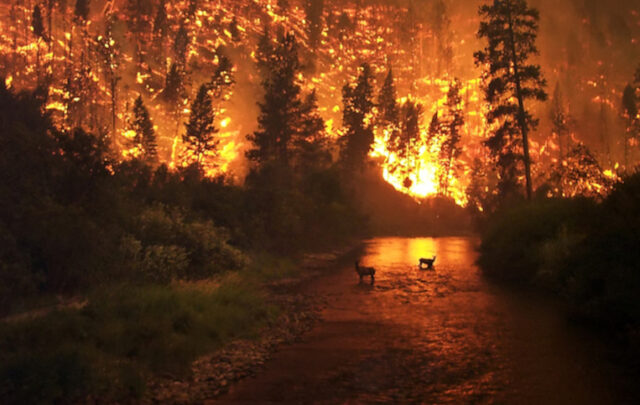What will the world do about its use of energy in the next few years – and more specifically, might expensive oil force much more radical changes than at present seem likely?
The oil price is the outward and visible sign of an energy market under strain. At close to $60 a barrel, it is approaching its highest level in real terms as well as being the highest in current dollars. It may not be quite up to the $80 peak it touched in the early 1980s but the present levels look more likely to be sustained. This is because the high price is driven by strong demand rather than restrictions on supply by Opec.
You can catch some feeling for this in the new edition of the BP Statistical Review of World Energy. World energy use grew by 4.3 per cent last year, which is the largest increase ever in absolute terms and the largest percentage increase since 1984. Every region increased its demand but the most dramatic rise came from China. The Chinese economy grew by 9.5 per cent, itself a stunning figure. But its energy use increased by 15.1 per cent. Over the past three years, Chinese energy demand has gone up by 65 per cent, and the country now uses 13.6 per cent of the world’s total energy.
And number two in the league table for increases in energy use? You can guess it: India, where demand has grown by 7.2 per cent – albeit on a lower base.
If you look at oil, rather than energy in general, last year saw the fastest rise in use since 1978. That was despite record oil prices, which in turn were despite record oil production, which rose above 80 million barrels a day for the first time.
So the producers did their bit – and have gone on doing so this year too. But still the oil price rises. Short of some catastrophic collapse in the economies of China and the US – the world’s two largest oil users – demand seems set to climb inexorably, while supply … well, what about supply?
Production was indeed at record levels last year, but that was thanks to Opec and to Russia. Two producers cut production sharply. They were, yes, the UK and the US. We are not cutting North Sea production because we want to; we are cutting it because we cannot produce any more. The same goes for the US.
This leads to the debate about the world’s total oil supplies. The conventional view, that of the major oil companies, is that while production will eventually peak, there is plenty of oil still to be found, and that production can rise at least for some years to come. The radical view, articulated by the Association for the Study of Peak Oil, is that global production is already close to its peak and may start to decline after 2006.
A lot will depend on the ability of Saudi Arabia, the world’s largest producer, to maintain or increase its output. As it happens, one of the people who has most clearly argued the view that Saudi Arabia is close to its peak production, the energy investment banker Matt Simmons, has a book out next month, the title of which explains his thesis. It is Twilight in the Desert – the coming Saudi oil shock and the world economy.
His views are well known. He feels that the Saudis have been too secretive and so outsiders cannot make an accurate assessment. But he notes that the main oil fields in Saudi Arabia were all discovered a generation or more ago and that, while better technology may enable higher production now, it does not increase the amount of oil in the ground. The faster it comes out, the less of the stuff there is left.
When experts disagree, what should the rest of us make of this?
The first point to be clear about is that while there is an oil problem, there isn’t really an energy problem, or at least not an immediate one. The left-hand graph above [Ed: not available in original online article.] shows that while oil is the largest single source of primary energy, it supplies only about 40 per cent of the total. Mind you, add in gas and you have about 60 per cent. Coal is plentiful, although there are serious environmental concerns about its use.
The next point is that non-fossil fuels, of which nuclear and hydro are by far the most important, as you can see, are a tiny fraction of the total by comparison. That is not to say they should be disregarded; simply that they cannot help much.
The third point is that different parts of the world have a different balance in their energy supplies. You can see that in the right-hand graph [Ed: not available in original]. Thus the Middle East unsurprisingly uses oil and gas for almost all its needs. The Asia/Pacific region (including China and India) uses coal as its largest single source of power. And Europe, which for the purposes of this exercise includes the whole of Russia, uses the highest proportion of gas – but then, Russia does have a lot of that.
So it is perfectly possible to substitute to some extent between oil and gas – compare Europe’s usage with that of North America. And it is possible to get by with less oil and gas, as the Asia/Pacific region does, provided you can put up with the problems created by burning coal.
The final point which seems to me to be glaringly obvious is that whatever happens to climate change as a result of using fossil fuels will be determined by the US, China, India and Russia, rather than by the EU. That is not an argument for Britain doing nothing, for we all have a responsibility to be, well, responsible. But we won’t change the outcome.
If that appears a rather dismal conclusion, there is also a more hopeful one. If the world were to adopt best practice for energy use, it could maintain its standard of living on perhaps 80 per cent of present consumption, maybe a bit less. The useful effect of higher oil prices is to drive the world towards adopting best practice. The market mechanism might succeed where international political debate has largely failed.
Consider a world where oil remains not just at its present levels but rises above $100 and shows every sign of staying there. If we want to increase our living standards we would start to ask whether we want to spend our money on energy or on something more agreeable. Expensive energy would give a huge drive for people, companies and governments to save it wherever they possibly could.
More than this, if economies are to go on delivering better standards of living, the only way to do so will be to become “greener” – to do the opposite of China, which is using more energy per unit of output, by increasing output without increasing energy use.
What we cannot know is whether the oil price is already sufficiently high to force radical change. On the other hand we can be pretty sure that if it isn’t, then it will go still higher. We shall, I suspect, see some brutal movements in energy prices in the next few years, particularly if the world is indeed close to the peak of its oil production.
No wonder Europe’s bankers get nervous when they look East
The world’s main central banks have suddenly become frightened. No, they won’t admit it, of course, because that is not what central bankers do. But it is not difficult to see that they are now worried – and this goes for the Bank of England, the Federal Reserve and the European Central Bank – that the world might catch the Japanese disease: deflation.
The outward sign of this is the change in mood over interest rates. A few weeks ago, people here in Britain expected another rise in rates sometime this summer. In the US, the Fed was expected to make several more upward moves. And in Europe it was a question of when its first upward move would come, in the autumn or next spring.
Now things are completely different. Here, two members of the Bank’s monetary committee have voted for a cut, and the betting on that is somewhere between August and next January – my own guess is October. In the US they expect one more rise, maybe two, but not more. And a cut, not a rise, is back on the agenda for the ECB.
The situation varies slightly in each place. In Britain, it is clear that the rises so far have clobbered the housing market and hence retail sales more seriously than the Bank expected. In the US, growth in consumer spending has eased a little (though maybe not enough) and there is now at least a discussion about a housing bubble, a possible prelude to the sort of slowdown we have seen here. In Europe, the fear is that some parts of the eurozone, in particular Germany, may be facing a classic liquidity trap. That is when cuts in rates do not stimulate the economy because the additional funds are saved, not spent. That happened in much of the world in the 1930s and in Japan in the 1990s.
Yet all this is taking place with the oil price at $60 a barrel. What seems to be happening is that globalisation – competition from low-cost producers, especially in China and India – is holding down world prices. So low interest rates do not lead to current inflation. Any excess money goes into asset prices, especially property and fixed-interest securities, but also to some extent shares. That is dangerous in the long run because asset price bubbles burst. Will the central banks get the balance right? No one can know. But it is certain that the peak of the current interest cycle will be the lowest since the 1950s.





